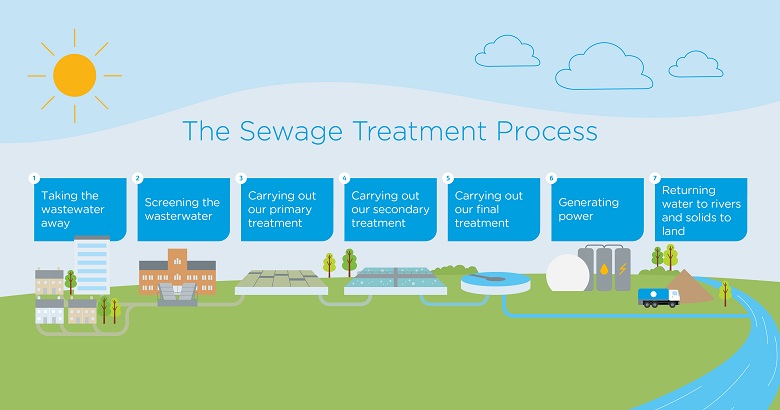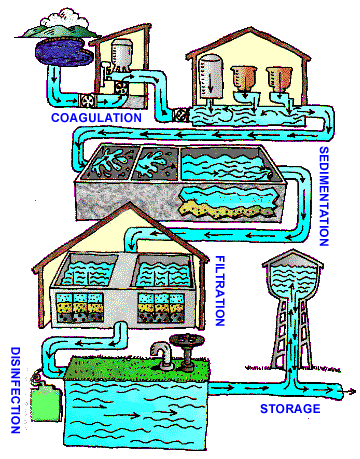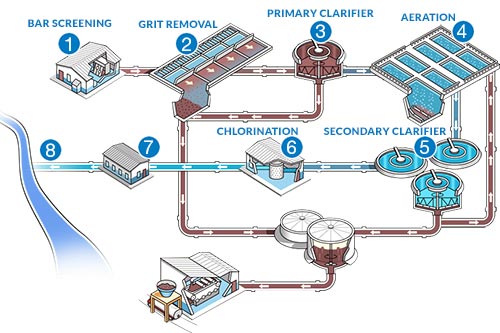The Only Guide to Uv Filtration
Table of ContentsNot known Facts About Uv FiltrationNot known Incorrect Statements About Uv Filtration An Unbiased View of Uv FiltrationAbout Uv Filtration


Elimination of taste and also smell compounds from the water.: Softens the water.: Purification to eliminate small particles as well as disinfection to eliminate infections as well as germs, and also make certain an unsuitable environment for infection and germs development throughout the circulation system.
Eight Phases of the Wastewater Refine Stage One Bar Testing Removal of huge things from the influent to stop damage to the facility's pumps, valves and also other devices. The procedure of dealing with as well as reclaiming water from wastewater (any type of water that has been made use of in homes, such as flushing bathrooms, cleaning recipes, or showering, and also some water from industrial usage as well as tornado sewers) starts with the expectation that after it is treated it will be tidy adequate to reenter the atmosphere.
9 Easy Facts About Uv Filtration Shown
According to the EPA, The Clean Water Act (CWA) establishes the standard framework for regulating discharges of pollutants into the waters of the United States and also controling high quality requirements for surface area waters. Under the CWA, EPA establishes wastewater requirements for sector. The EPA has actually additionally developed national water top quality requirements recommendations for toxins in surface waters.
Associated White Papers Select Products Phase Two Testing Removal of grit by moving the influent over/through a grit chamber. Fine grit that finds its way right into the influent needs to be removed to stop the damage of pumps and devices downstream (or effect water flow). Too small to be screened out, this grit requires to be eliminated from the grit chamber.
Phase 4 Oygenation Air is pumped right into the aeration tank/basin to urge conversion of NH3 to NO3 and also give oxygen for microorganisms to remain to proliferate as well as grow. As soon Recommended Site as transformed to NO3, the microorganisms remove/strip oxygen molecules from the nitrate molecules and also the nitrogen (N) is provided off as N2 (nitrogen gas) - uv filtration.
This begins in the oygenation container. The primary feature of the oygenation container is to pump oxygen into the storage tank to urge the breakdown of any kind of organic material (and also the growth of the bacteria), as well as ensure there suffices time for the organic product to be damaged down.
How Uv Filtration can Save You Time, Stress, and Money.
This process is handled to offer the very best conditions for microbial growth. Oxygen gas [O2] degrees listed below 2 ppm will kill off the microorganisms, reducing efficiency of the helpful hints plant. Liquified oxygen surveillance at this phase of the plant is crucial. Ammonia as well as nitrate dimensions prevail to gauge just how efficient the microorganisms are in transforming NH3 to N2.
Phase 5 Second Clarifier Treated wastewater is pumped right into a secondary clarifier to enable any continuing to be organic sediment to resolve out of treated water flow. As the influent departures the oygenation procedure, it moves right into a second clarifier where, like the main clarifier, any kind of very small solids (or fines) sink to the base of the storage tank.

With the enhanced concentration of bacteria as part of the aeration stage, there is a requirement to examine the outgoing effluent for bacteria existence or absence and also to decontaminate the water. This ensures that higher than defined focus of microorganisms are not launched into the atmosphere. Chlorination is one of the most usual and also affordable sort of sanitation however ozone as well as UV disinfection are likewise raising in appeal.
Uv Filtration Things To Know Before You Buy
Water is routed from the Head Container to the Claricone clarifier. Water gets in the clarifier at the mixing area located in the bottom of the Claricone - uv filtration. Lime is contributed to the water in this area where it reacts with the calcium and read the article also the magnesium in the water to create precipitates.
After sufficient time, fragments stick to each other and become larger bits, or, floc, which is prone to settle in water. This process of floc formation is called flocculation. To assist in the flocculation of bits, an anionic polymer is included in the mixing area of the cone. Information of water is accomplished by the seperation of put on hold solids from water by gravity.
The made clear water steps upward gradually, at some point passing over the effluent dam to the cone outlet as well as on the to filters for more therapy. The water plant includes a single stage lime softening procedure to get rid of solidity. Hardness is triggered by the visibility of dissolved bivalent and also polyvalent metal ions, mainly calcium and also magnesium.
This is included both in the clearwell and also the high solution discharge as water gets in the distribution system. 2 mg/l is generally preferable in the plant faucet.